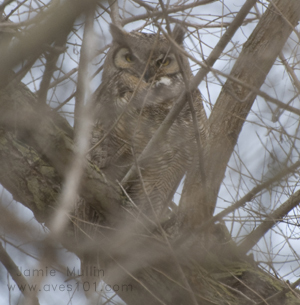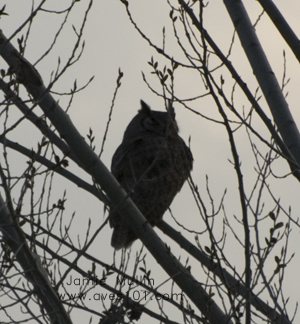Great Horned Owl
Order: Strigiformes
Family: Strigidae
Genus: Bubo
Species: virginianus
**Gread Horned Owl Audio Below**
Description
-
Length: 22.0"
-
Wing span: 44.0"
-
Weight: 3.1lbs (1,400 grams)
-
Large owl
-
Brown or grey overall with dark barring on chest
-
Distinct ear tufts widley spaced on head (cat-like)
-
White throat not always visible
-
Light grey to orange facial disc outlined in black
-
No differences in plumage between the males and females although the female is larger
Factoids:
-
Found from the Arctic tundra to the tropical rainforest, from the desert to suburban backyards, the Great Horned Owl is one of the most widespread and common owls in North America.
- The Great Horned Owl is the only animal that regularly eats skunks
- The Great Horned Owl will take large prey, even other raptorial birds. It regularly kills and eats other owls, and is an important predator on nestling Ospreys. The reintroduction of Peregrine Falcons has been hampered in some areas by owls killing both adult and nestling falcons
- The Great Horned Owl is a regular victim of harassment from flocks of American Crows. Crows congregate from long distances to mob owls, and may continue yelling at them for hours. The enmity of the crows is well earned, however, as the owl is probably the most important predator on adult crows and nestlings
- Even though the female Great Horned Owl is larger than her mate, the male has a deeper voice. Pairs often call together, with audible differences in pitch.
All photographs and audio clips are ©Jamie Mullin 2006
Sources: Cornell Lab of Ornithology & The Sibley Guide to Birds.
 |
|---|
 |
 |
 |
 |